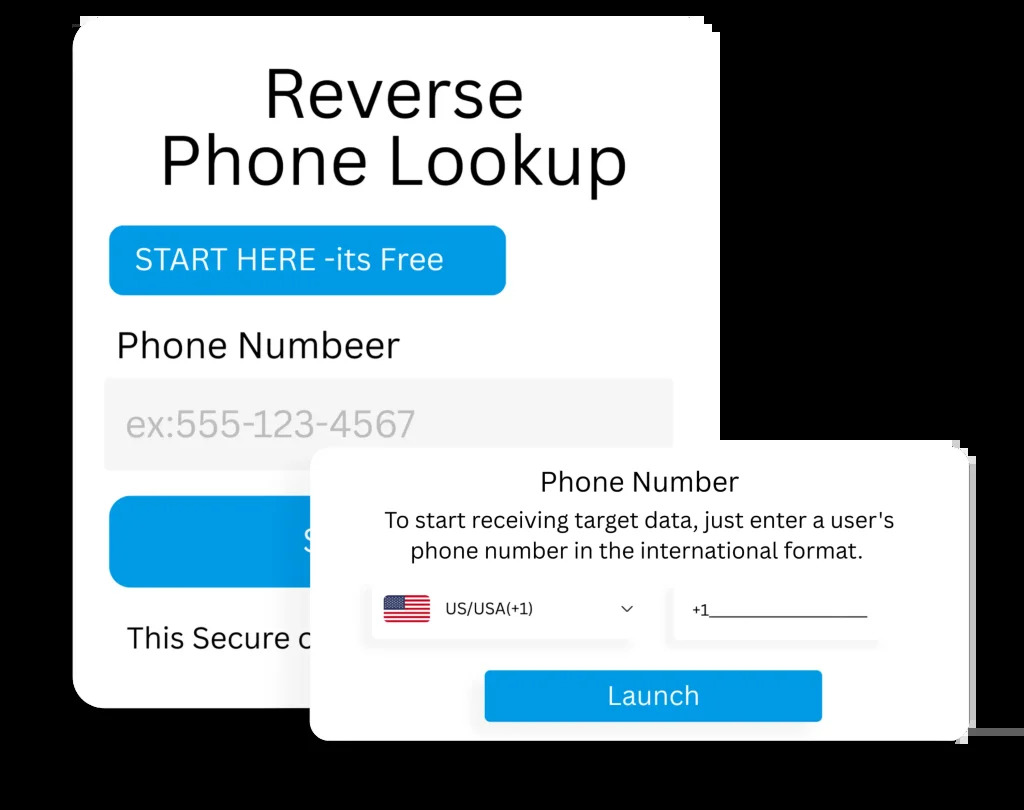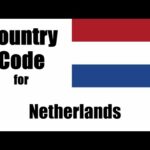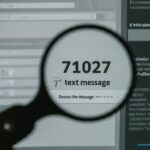The term international phone number lookup refers to the process of using a phone number (including its country code) to discover details about the owner, location, line type (mobile or landline), and, most critically, whether the number is a known source of spam or scams.
Whether you’ve received a suspicious call from an unfamiliar international number or you need to verify a business contact abroad, performing a reverse international phone number lookup is your best way to gain peace of mind and protect yourself from fraud.
This comprehensive guide breaks down the most effective free and paid tools available for tracing international numbers and provides the exact steps you need to take to identify foreign callers.

The Primary Goal: Reverse International Phone Number Lookup
Most users searching for “international phone number lookup” are actually looking for reverse phone lookup services. This process is crucial when dealing with unknown numbers, which often originate from foreign countries dueipers to international scam operations.
The information you can uncover includes:
- Country and Region: Pinpointing the geographical origin of the number (e.g., +44 for the UK, +31 for the Netherlands).
- Line Type: Identifying if the number is a mobile, landline, or Voice over Internet Protocol (VoIP) number.
- Carrier: Determining the telecommunications provider (e.g., T-Mobile, Vodafone).
- Spam/Scam Reports: Most importantly, checking if the number has been flagged by others as fraudulent, a telemarketer, or a “one-ring” scammer.
The Best Tools for International Phone Number Lookup
The effectiveness of an international phone number lookup tool relies heavily on its global database size and its community-driven reporting features.
- Free and Community-Driven Apps (Best for Scam & Spam Checks)
These tools leverage massive user bases to identify and block spam in real-time. They are the best first step for checking an unknown international number.
| Tool | Key Feature for International Lookups | Pros | Cons |
| Truecaller | AI-powered Caller ID & Global Spam Database (450M+ users). | Excellent real-time spam and scam flagging; free basic web search. | Requires app download for full, real-time blocking; uses a community-contributed database. |
| Whoscall | Strong focus on Asian markets, highly effective at blocking and identifying unknown calls globally. | Real-time Caller ID and scam blocking; checks links and screenshots. | Free tier has limitations; primarily mobile app-based. |
- Free Validation and Analysis Tools (Best for Technical Details)
These simple, no-sign-up tools are excellent for verifying the validity and origin of a number without delving into owner details.
- International Numbering Plans / NumberingPlans.com: Allows you to input any number in international format (e.g., +49 30 XXXX XXXX) to get technical data, such as the country, city/region code, and a brief history of the number’s structure.
- Veriphone / KrispCall (Free Tier): These services focus on phone number validation, instantly confirming if the number is a legitimate, active line and identifying its carrier and line type. Some offer a small number of free lookups per month.
- Paid/Premium Reverse Lookup Services (Best for Personal Details)
These tools are designed to uncover the actual owner or business associated with a number, often requiring a paid subscription or a one-time fee. They typically focus more heavily on US data but have expanding international coverage.
- Whitepages Premium: Offers reverse lookups that can sometimes provide names and addresses associated with numbers in certain countries.
- BeenVerified / Spokeo: General background check services that include reverse phone lookup functionality, drawing data from various public records and social media profiles.
How to Perform a Free International Phone Number Lookup
If you are just trying to determine the country and check for scam reports, there are actionable steps you can take for free.
Step 1: Analyze the Number Format
Every international number begins with the country code (indicated by the “+” sign). This immediately tells you the country of origin.
- Example: A number like +49 30 1234 5678 tells you:
- +49 is the country code for Germany.
- 30 is the area code for Berlin.
Step 2: Search the Country Code
Perform a simple Google search for the country code to confirm the country. This is the fastest way to get basic geographical information.
- Search Example: “country code +49”
Step 3: Check for Scams on Community Tools
Enter the full international number (including the + and country code) into the web lookup portals of a community-based tool like Truecaller.
- If the number is linked to a known scam, it will often display a name like “Insurance Spam” or “Nigerian Scam.” Check the Spam Reports count—a high number indicates a high risk.
- Check online forums, like Reddit or specialized consumer protection sites (e.g., Scamwatch), for the number. Scammers often use the same numbers repeatedly, and victims frequently post warnings.
Protecting Yourself: The International Scam Check
A primary reason for an international phone number lookup is to avoid being a victim of fraud. Scammers frequently operate from foreign call centers and use various tactics to target people globally.
Recognizing Red Flags from International Numbers
| Red Flag | Description & Risk | Actionable Step |
| The “One-Ring” Call | The phone rings once, then hangs up. If you call back, you are connected to an expensive premium-rate line, generating income for the scammer. | NEVER call back a one-ring international number you do not recognize. |
| Unexpected Family/Friend Text | A text from an international number (e.g., +31, +44) claiming to be a child or relative who “lost their phone” and needs money transferred urgently. | Verify their identity by calling their old, known number or asking a private question only they would know. Do not transfer money. |
| Impersonation | The caller claims to be from a government agency (e.g., tax authority, police) or a major tech company (e.g., Microsoft, Amazon). | Hang up immediately. Government agencies do not make unsolicited calls demanding personal data or immediate payment. Call the company/agency back on their official published number to verify. |
| VoIP or Virtual Number | Reverse lookup tools identify the number as a VoIP/virtual line, which is easy for scammers to obtain and discard quickly. | Treat the call with extreme suspicion, as the number is likely untraceable to a physical location or registered identity. |
Frequently Asked Questions (FAQ)
Is it legal to use an international phone number lookup service?
Yes, performing a reverse international phone number lookup using publicly available information is generally legal. These services draw on public directories, user submissions, and published business records. They are not accessing private, protected telecommunications data.
Why do some international number lookups fail to find a name?
Many lookups, especially for international mobile numbers, fail because:
- The number is a prepaid mobile or a temporary VoIP number, which are often unlisted.
- The number is not included in the lookup service’s global database.
- Privacy laws in certain countries (like those in Europe) make it illegal to link names to private phone numbers in public databases.
How do I input the number correctly into a lookup tool?
Always enter the number in the full international format, starting with the + sign followed by the country code, then the local numbers (dropping any domestic trunk prefixes like ‘0’).
- Correct: +31 6 1234 5678
- Incorrect: 31612345678 (Missing the ‘+’), or 011 31 6 1234 5678 (Includes the US exit code).
Can I block international calls automatically?
Yes. Most modern smartphones and mobile carriers offer settings to silence or block all calls from numbers not in your contacts. Additionally, downloading an app like Truecaller or Whoscall will automatically block known international spam and fraud numbers based on their continuously updated global databases.
Conclusion
Conducting an international phone number lookup is an essential part of modern digital safety and communication. The most effective approach is to first use free, community-driven tools like Truecaller to check for immediate spam warnings. By combining these tools with a critical understanding of common international scam tactics, you can confidently identify who is calling you from abroad and protect your personal and financial security.


